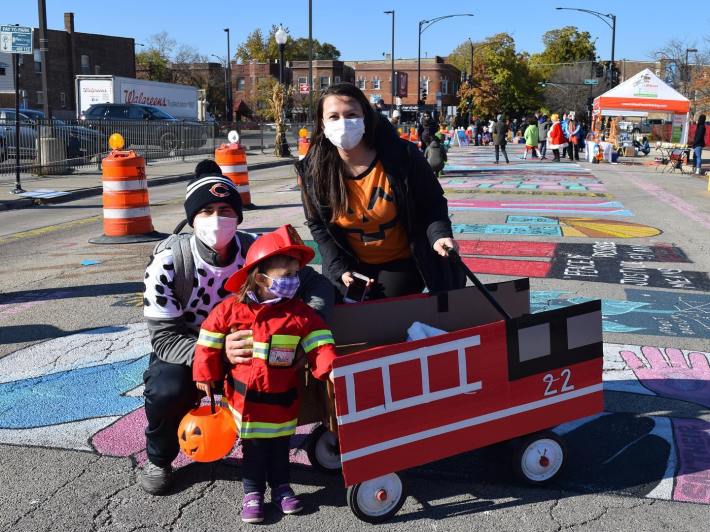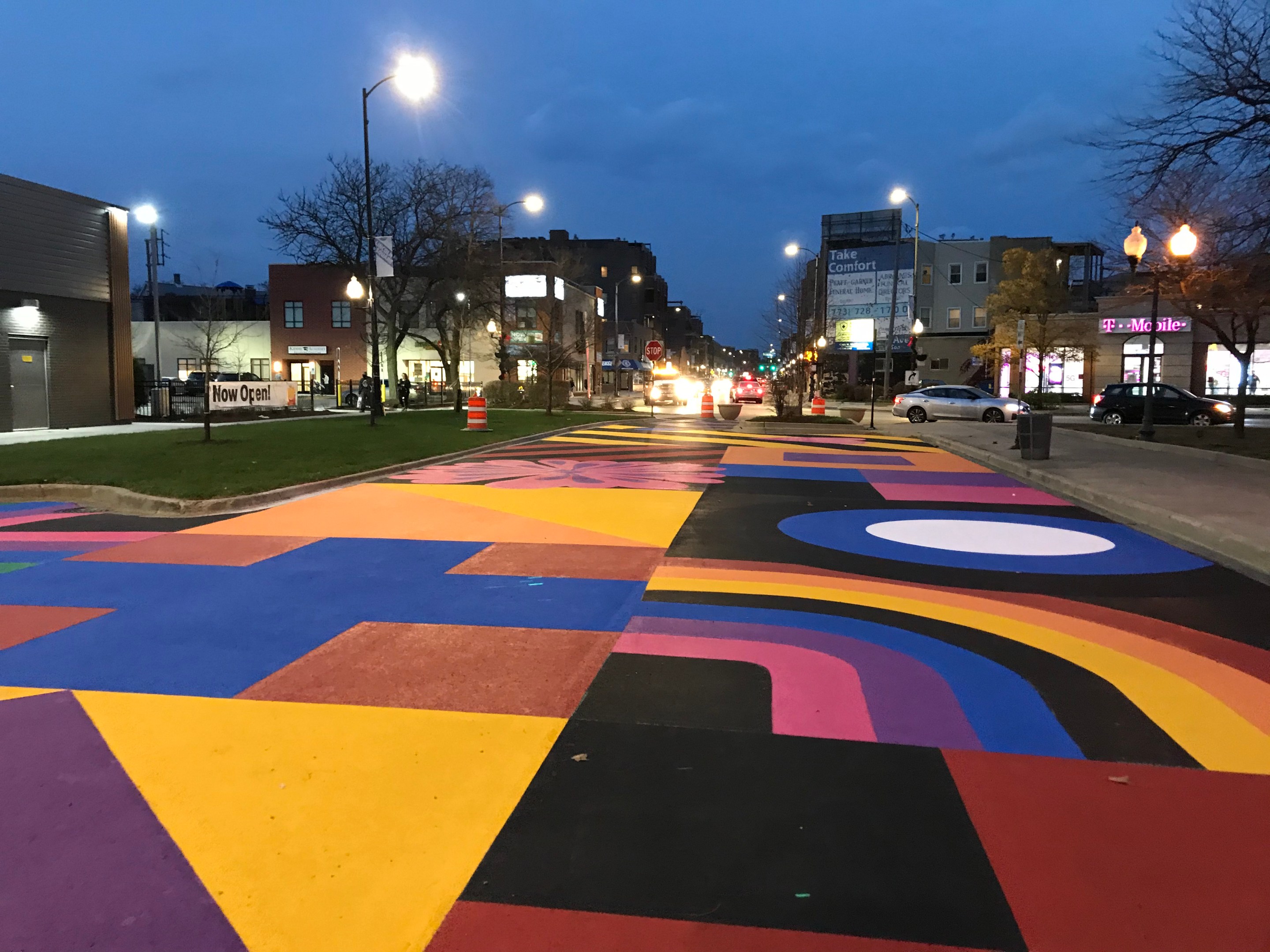The Active Transportation Alliance’s second transit justice town hall, conducted via Zoom Wednesday evening, was a rallying cry for local civic engagement. 40th Ward alderman Andre Vasquez, Darek Lau of the Coalition for a Better Chinese American Community, and Renee Patten of the Edgewater Environmental Sustainability Project took part in a conversation on advancing walking and biking projects during COVID-19. State Representative Theresa Mah was also scheduled to appear but was forced to cancel after testing positive for the coronavirus.
ATA campaign manager W. Robert Schultz III made brief opening remarks, and noting that ATA would use “walking” and “pedestrian,” for lack of more suitable terms, to include people using mobility aids like wheelchairs and scooters. Schultz also promoted ATA’s Walk Challenge, which runs through November 15th, and the upcoming World Day of Remembrance for Road Traffic Victims.
Schultz stated ATA’s support for universally lowering speed limits in Chicago to below 30 miles per hour, which would decrease the number of serious and fatal crashes and dramatically improve the survival rate for pedestrians struck by drivers. He then cited Archer Avenue as an example of a road that would benefit from a reduced speed limit. Archer is a wide street that runs diagonally through Chicago’s grid, encouraging speeding and slicing up intersections into complex, crash-prone six-corner junctions. A prime example of that phenomenon is the Princeton/Cermak/Archer intersection in Chinatown, the site of multiple bike and pedestrian crashes.
Lau of the CBCAC participated in the creation of the 2017 Chinatown Walkability Report, and discussed the importance of safe multimodal travel, particularly in an area with a large immigrant population, a larger proportion of whom are elderly and don’t have access to a motor vehicle. Lau also noted that Archer has the only bike lane in the neighborhood, and commented on the disparity in maintenance of storefront streets, which attract tourists, versus residential streets in the neighborhood.
Next, Renee Patten introduced the work of EESP, a volunteer organization that has been advocating for more space for people and less for cars during the pandemic. The EESP has requested that he city keep open the Lakefront Trail, The 606 and other off-street path for essential workers; that it create an emergency plan for a citywide Open Streets (reallocating car space for walking and biking) program; and reinstate the Chicago Department of the Environment, which was disbanded in 2011. Patten added that the constraints of the 2021 budget made that last goal unlikely, but noted that “it needs to be said.”
The city’s budget crisis, a shortfall of $1.5 billion exacerbated by the pandemic, came up more than once throughout the evening. Vasquez opened his remarks by noting that the current budget hearings have brought into stark focus the many needs across the city. The alderman, in his second year at City Hall, stated that a bright side of the pandemic was the opportunity to reimagine the public way, and his initial enthusiasm at the idea of an Open Streets program.
The Lightfoot administration has been slower than leaders of many peer cities to reallocate space for pedestrians, cyclists, and transit users during the crisis. But Vasquez has made headway in his ward with the Ainslie Arts Plaza, which is transforming the one-way stretch of Lincoln Avenue between Lawrence and Ainslie avenues, which was basically a city-owned parking lot, into a pedestrian plaza and public art project.
Art has been a key component of Vasquez’s strategy for street revitalization projects. The alderman cited the complimentary energy of the Black Trans Lives Matter mural and Slow Street on Catalpa Avenue between Ashland Avenue and Clark Street in Andersonville, and his Zoom background during the meeting was the rendering of the Ainslie Arts Plaza. In response to a question about how to get the city to prioritize the creation of more Open Streets, the Alderman said art projects, like the BTLM mural, have been an effective way to get a foot in the door.

“Regardless of economic status, and where people are from, art is something that’s universal, where people go, ‘Oh! I’d love to see that,” he said. “It helps people wrap their heads around it.”
At the city level, Vasquez said that despite an abysmal budget—in his estimation, the worst in the city’s history—the environment and transportation are a priority, and Mayor Lightfoot has discussed creating the first multi-year capital plan for infrastructure improvements and economic development. Vasquez sees this capital plan as a place to secure funding for protected bike lanes and other new infrastructure for walk/bike/transit.
Lau asked the alderman his process for making safety improvements for pedestrians and bike riders, noting the lack of significant improvements in Chinatown. “My core value is open government,” Vasquez replied. “And what I mean by that is a lot of the things we do are driven by what neighbors bring to us.” The alderman encouraged constituents to contact his office and the offices of other aldermen who have a track record of being particularly responsive, regardless of ward.
Lynda Lopez, advocacy manager for ATA, asked about how organizations can effectively advocate against future transit shutdowns, that have stranded essential workers during the pandemic, and the use of city vehicles to blockade streets and bike lanes. Vasquez likened his approach to a chess game. “You don’t necessarily go for the thing you want directly,” he said. “Say for example city vehicles are being propped up because, ‘Hey, downtown could be attacked, we should protect downtown,’ or whatever. You could say, ‘This is blocking bikes, it’s not equitable.’ I’m willing to bet any penny in my pocket that would not get you that far. The other route you could go is say, ‘It costs a lot of money to have these vehicles out there and you’re paying overtime for people to watch these vehicles. And when we’re dealing with a budget shortfall, how much are we spending to have these vehicles out there?’ You can get a lot further with that conversation.”
When asked about how to advocate for additional and permanent Open Streets, and for the creation of new bike lanes, Vasquez said that advocates need to be as vocal as neighbors who complain about potentially losing parking spaces. “Any time a parking spot is in jeopardy, neighbors swarm,” he said. “Neighbors in favor [street redesigns] to be as vocal and organized. It’s the hardest thing: when it comes to affordable housing, when it comes to bikes, it is parking. It’s people’s belief that they need multiple parking spots for every unit and every time they lose a parking spot it’s the most valuable asset in a community. That really needs to change or the world is going to burn.”




